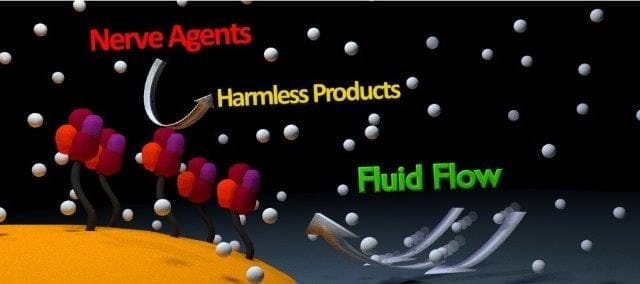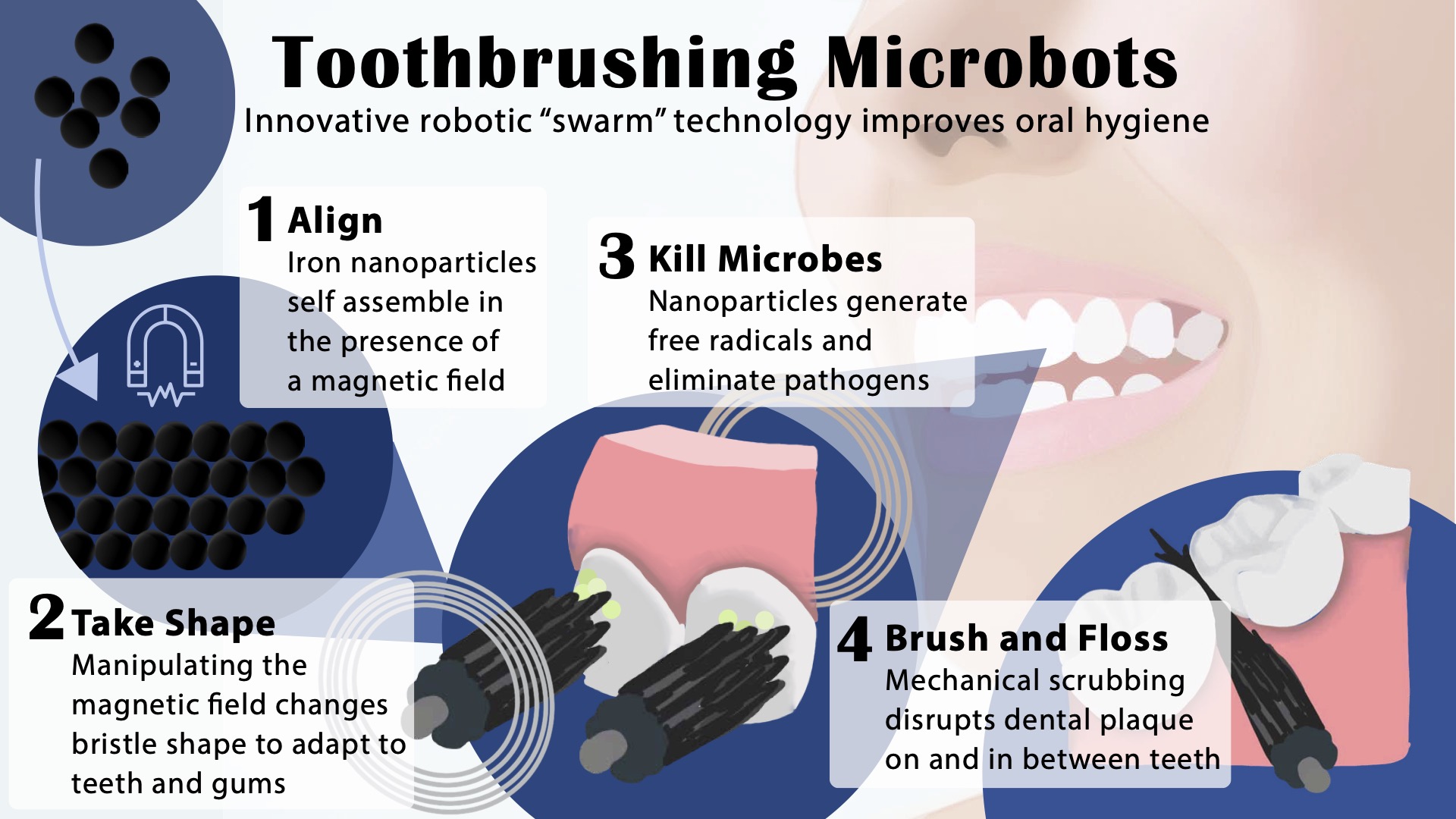
Credit: Ayusman Sen
Once in the territory of science fiction, “nanobots” are closer than ever to becoming a reality, with possible applications in medicine, manufacturing, robotics and fluidics. Today, scientists report progress in developing the tiny machines: They have made nanobot pumps that destroy nerve agents, while simultaneously administering an antidote.
According to Ayusman Sen, Ph.D., the project’s principal investigator, this study arose from more general research aimed at making nanobots from enzymes. “We have been looking at how to convert chemical energy into motion,” he says. “We take the energy that’s generated from catalytic reactions to cause the motion of enzymes.”
To make his nanobots, Sen and his group at The Pennsylvania State University used enzymes found in nature. These are proteins that help specific chemical reactions occur, converting a reactant (raw material) into a product.
The realization that enzymes can move when catalyzing a reaction is a relatively new discovery. Previously, scientists thought that these proteins drifted along in the cytoplasm of the cell by passive diffusion, encountering their reactants and other enzymes by more-or-less chance interactions. However, Sen and others have recently shown that when enzymes catalyze a reaction, they move. Researchers still aren’t sure how this motion occurs, but it likely involves a change in the shape of the enzyme upon catalysis. Sen’s group has shown that these proteins can even swim along a path toward higher levels of reactant. These features make enzymes an attractive material for developing nanobots.
“If we take enzymes and anchor them to a surface so they cannot move, and we give them their reactant, they end up pumping the fluid surrounding them,” Sen says. “So they act as miniature fluid pumps that can be used for a variety of applications.” He notes that the nanobots pump liquid at the rate of several microliters — or millionths of a liter –- per second.
Sen and his coworkers made nanobots to neutralize organophosphates, a class of nerve agents. Exposure to these chemicals during military combat or terrorist attacks can cause permanent neurological damage, and in some cases, death. An enzyme, called organophosphorus acid anhydrolase, can destroy these nerve agents. The researchers immobilized this enzyme on a gel that also contained an antidote. Exposure to organophosphates activates the enzyme. “The enzyme actively pumps in the organosphosphate compound and destroys it, and at the same time pumps out an antidote,” Sen says. Importantly, the system requires no external power source because the enzyme is fueled by the organophosphate reactant.
The nanobot pumps might someday be incorporated into protective clothing for the military or first responders, Sen says. He is also exploring applications for nanobots based on other enzymes, for example, an insulin-pumping device to treat diabetes and an enzyme-powered drug-delivery system. The Pennsylvania State University has filed a patent application on the promising new technology. “If you want to make pumps that will pump very small amounts of liquid in a very precise way, this is one way to do that,” Sen says.
This research was presented at a meeting of the American Chemical Society
Learn more: Nanobot pumps destroy nerve agents
The Latest on: Nanobots
[google_news title=”” keyword=”nanobots” num_posts=”10″ blurb_length=”0″ show_thumb=”left”]
via Google News
The Latest on: Nanobots
- Fighting cancer at the rooton May 8, 2024 at 1:58 pm
Researchers at the branch of the German Cancer Research Center (DKFZ) in Dresden are working on tiny robots. These are designed to act ...
- New mussel-inspired one-shot nanoparticle assembly technique to aid energy applicationson May 7, 2024 at 9:55 am
Nanoscale technology often allows scientists to creatively develop new applications by manipulating singular atoms ...
- Nanobots Self Replicateon May 2, 2024 at 5:00 pm
Hey, what if you could have a factory that makes robots that is run by… robots? This is hardly an original thought, but we are a long way from having an assembly line of C3POs self-replicating.
- Can Scientific Thinking Save the World?on May 1, 2024 at 7:56 am
A physicist, a philosopher and a psychologist are working together to bring better, smarter decision-making to the masses ...
- Medical Moment: The future of medical microbotson April 29, 2024 at 6:40 pm
(WNDU) - Robots have changed the medical field, and now, those robots are becoming smaller than ever before. They’re called microbots, also known as nanobots. They’re microscopic in scale, and ...
- Nanobots to the Rescue! The Future of Medical Microbotson April 18, 2024 at 7:59 am
DENVER, Colo. (Ivanhoe Newswire)- Robots have changed the medical field, and now, those robots are becoming smaller than ever before. They’re called microbots, also known as nanorobots.
- Nanobots to the Rescue! The Future of Medical Microbotson April 17, 2024 at 5:00 pm
Sixty to 70 million Americans suffer from gastrointestinal disorders, and undergo endoscopies and colonoscopies, which show structural problems in the digestive tract. But taking it a step beyond ...
- What are nanobots?on April 3, 2019 at 9:28 am
These nanobots are a reality and are being actively researched and developed. The field of nanorobotics involves the design, creation, and control of these nanoscale programmable molecules.
- Nanobots Swim Like Scallops In Non-Newtonian Fluidson November 8, 2014 at 2:15 am
The idea of using nanobots to treat diseases has been around for years, though it has yet to be realized in any significant manner. Inspired by Purcell’s Scallop theorem, scientists from the Max ...
via Bing News










